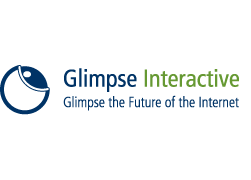![]()
White Paper Series: Interactive Marketing and ROI - Part 1: Setting SMART Goals
By: Jeremy Duimstra
In years past, businesses spent millions of dollars on interactive marketing campaigns that returned absolutely nothing on the money invested. Banners worked for a little while, and then the clickthrough rates fell to practically zero. Pop-up ads suffered the same fate – and most folks would say they did so for a good reason… they’re annoying! Given the current economic situation it is more important than ever to spend those dollars wisely.
The good news is, interactive marketing is finally changing. Companies are realizing that, without due diligence, an investment often returns nothing at all. And they’re no longer willing to throw their investment into a black hole, with no idea about what results they’re getting.
Setting Useful Objectives
You've probably heard that useful objectives are critical to interactive marketing success. But what exactly is a useful objective?
It’s one that’s SMART: Specific, Measurable, Achievable, Realistic, and Time-limited.
Those are relatively self-explanatory terms, and I’m not the first person to use them. If you haven’t seen them before, here’s the only point of clarification most people ever need. The difference between achievable and realistic is the difference between myself and Barry Bonds, baseball’s home run king.
- "Achievable" means that somebody, somewhere could do something under ideal circumstances.
- "Realistic" means a specific person (like me or you) could do something under existing circumstances.
So, hitting 73 home runs in major league baseball is achievable. But for most of us mere mortals, it isn’t realistic. We have to be honest with ourselves about our capabilities to make sure we’re setting an objective we can use later as a benchmark to measure our results.
Examples
- "I want my interactive marketing to increase my sales next year" isn’t a SMART objective. It’s neither specific nor measurable, although it IS achievable, realistic, and time-limited.
- "I want my interactive marketing campaign to increase my sales by 600% next year" also isn’t a SMART objective. It’s specific, it’s measureable, it’s time-limited…but it’s not achievable or realistic. Sorry, but the marketing tactic hasn’t been invented yet that could predictably and reliably deliver results quite that high!
- "I want my interactive marketing campaign to increase my sales by 15% in the first quarter of 2003" – now, that’s a smart objective.
When you benchmark performance against good initial objectives, you will quickly be able to identify which parts of your plan are working for you, which aren’t, and what needs to change. This process will allow you to allocate resources intelligently, focusing on the parts of the plan that are producing the greatest return on your investment.
So, How Do You Measure Interactive Marketing ROI?
Useful measurements in Interactive Marketing include:
- Customer Acquisition Cost (CAC) – how many marketing dollars does it cost to turn a prospect into a buyer? (Web statistics software is very helpful in determining the CAC).
- Repeat business – how many times, on average, does an acquired customer return to you to buy more products or services?
- Lifetime value of a customer – how much revenue will you realize as a result of converting a prospect into a client? What are average billings per year per client? How many years does an average client buy from you? (You may need to adjust these formulas to fit your own world.)
These numbers are examples that will help you determine what marketing efforts will best fulfill your goals.
Six ROI Techniques
Six methods of Interactive Marketing can be tracked and measured usefully for most businesses. They are:
- Lead Generation
- Lead Conversion and Sales
- Brand-Building
- Getting Found - Search Engine Optimization (Coming Soon!)
- Customer Service
- Market Research

